Bullet Journal Index: Tips, Tricks, Inspirations
Hello Planning Mashers!
An index is one of the core Bullet Journal page ideas of the system. But not everyone is using it. Why not? Do you need one in your journal? And why is it an important page?
In this post, you’ll learn everything about the Bullet Journal index page, different ways you can set it up, and help you decide if you want to have one in your journal.
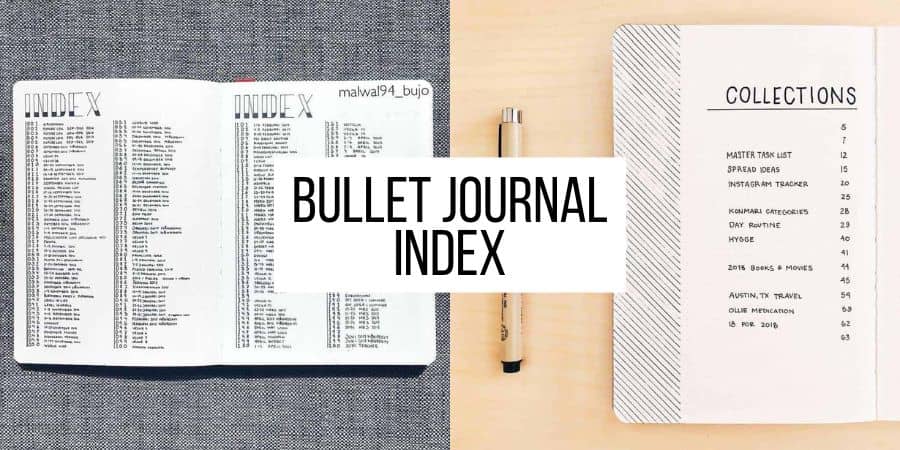
Before we dive in, you should check out my guide to Bullet Journaling for beginners in case you’re just starting your Bullet Journal. This post will give you a good overview of the system.
In this post, we are looking at the Bullet Journal index, but some other pages you might want to learn about:
- Bullet Journal Key
- Bullet Journal Index (this post)
- Future Log
- Monthly Spread
- Weekly / Daily Spreads
- Bullet Journal Collections
This post may contain affiliate links. They will be of no extra expense for you, but I receive a small credit. Please see my Disclosure for more details. Thank you for supporting Masha Plans!
What Is Bullet Journal Index?
The index is basically a content table. It’s a list of information you have in your Bullet Journal and pages where you can find it. The only big difference is that you don’t have to write your content in a linear way.
To create an index page, you basically just need a few free pages at the beginning of your journal and numbered pages. Some notebooks, like Leuchtturm1917 or Scribbles That Matter already have pre-made index pages.
I love to design it all by myself, according to what I need from an index page, so I definitely prefer a journal with empty pages. But if you decide to use an index, you better make sure that your pages are numbered. In my first journal, I had an index but I had to number each page myself, and it was pretty difficult.
Before you make any decisions on your notebook, however, let’s talk about why you need an index and why you might not need one.
Why You Need An Index Page
The original concept of the Bullet Journal system is that you fill your journal in a linear way. This means that your planning pages can be randomly broken by some notes pages, collections, or lists. This would make your journal a total mess, wouldn’t it?
Well, it wouldn’t! Because that’s where the index page comes to the rescue. This is basically a roadmap to your journal.
You write down here all the pages you need and where to find them in your journal. That way, all the information is really easily accessible.
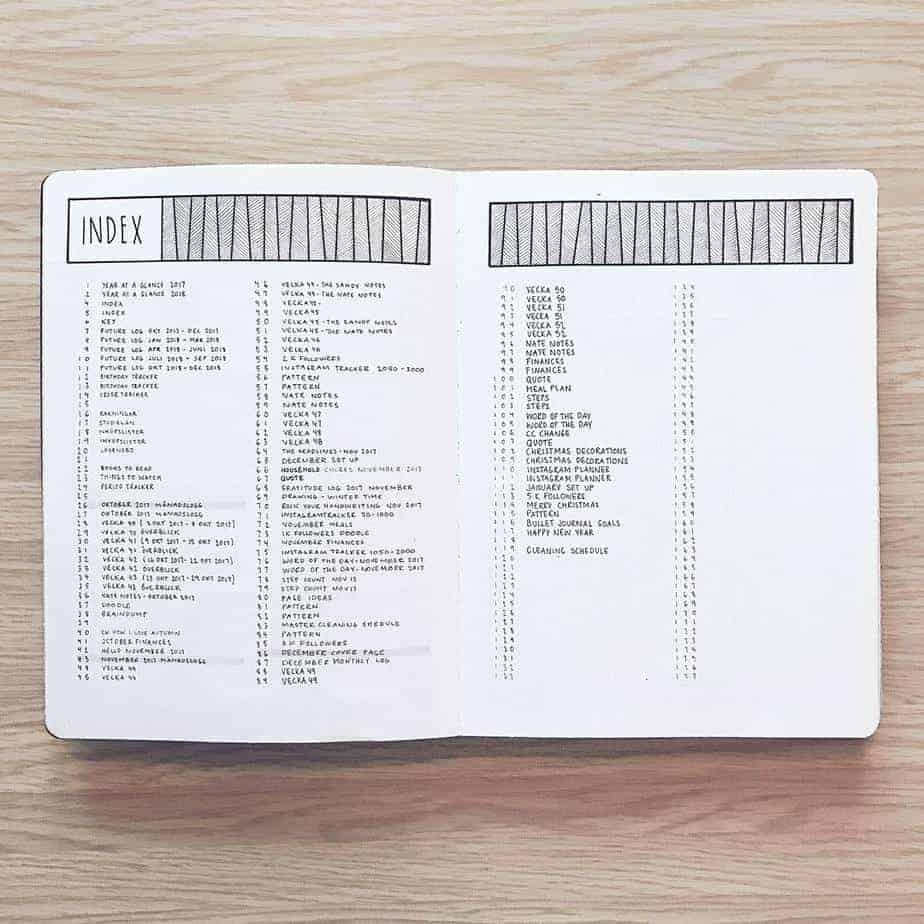
Here are some examples of when you’ll need to have an index page:
- If you’re using a journal with many pages and you use it according to the original system, with inserted collections among your planning pages.
- If you’re using the basic rapid logging system, and by just flipping through the journal, you wouldn’t be able to visually divide your pages.
- If you know you have some evergreen page, you’ll be coming back to, even when you start a new journal.
When You Might Not Need An Index
Of course, in time the system has changed and evolved into something new. Now an index isn’t such a must-have page after all.
I have one right now, but in my previous journal I didn’t, and I didn’t feel like I missed out on something. Here are some reasons why you might not need an index:
- If you’re using a thin journal having an index can be redundant.
- If you’re using your journal just for one thing. For example, I use my journal just for planning, and I have a separate one for collections and work. I really don’t have a lot of pages to come back to – I just need to know where my last page is.
- If you’re using some different ways to categorize your journal, such as washi tapes, or color-coding (learn more about these later on in this post)
- If you have an artistic journal and all your pages look different. That way you can just flip through and see on the spot what pages are what month. Plus I bet if you have an artistic journal it’s an extra pleasure to look through it all.
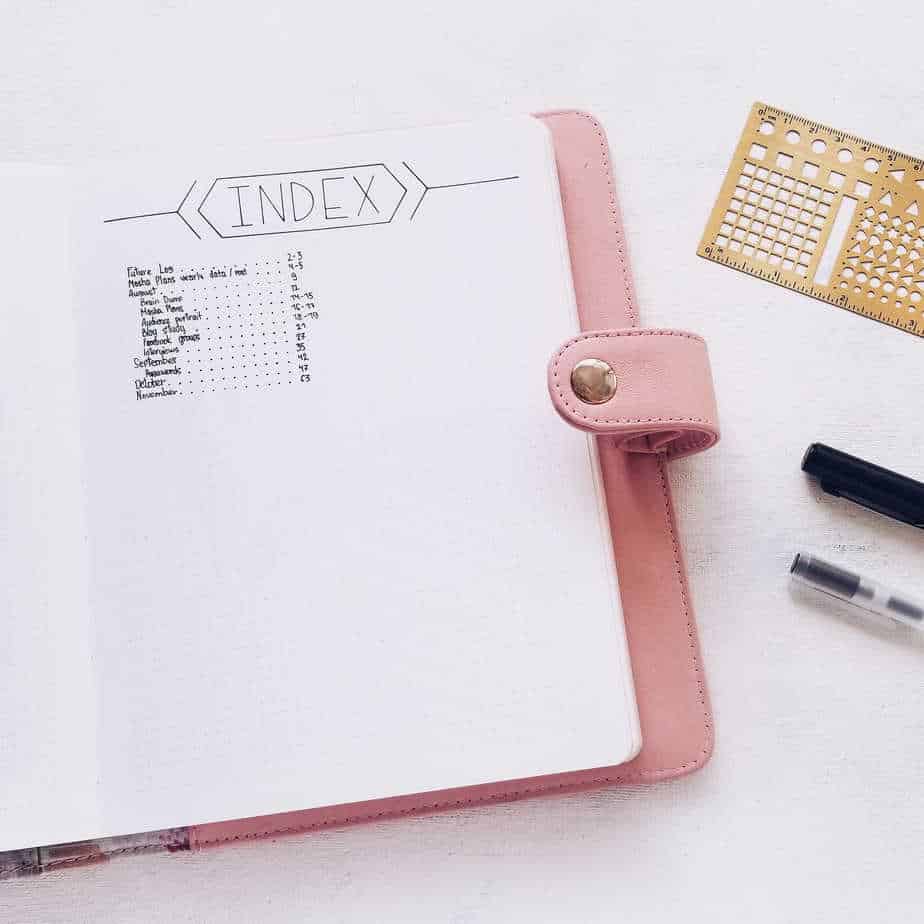
How To Fill Out Your Index Page
To make your index work the best for you, you can use different ways to organize it. Here are some of them.
- Fill it out numerically. This means that as you go, you write down separately on each page of your journal. This is great because it will create a very detailed index. However, it will definitely take a lot of space in your journal. Plus most likely you won’t be needing to write down each and every page.
- Fill it out by content. This will definitely save you some space. This means that you combine the same pages from different months in the same line. For example:
Habit trackers – 14, 28, 43
Or you can just write down all monthly pages together. For example:
December – 60-72 - Divide the content. Another way to fill out the index page is to divide it into two parts. Have one index for your planning pages and a separate one for collections.
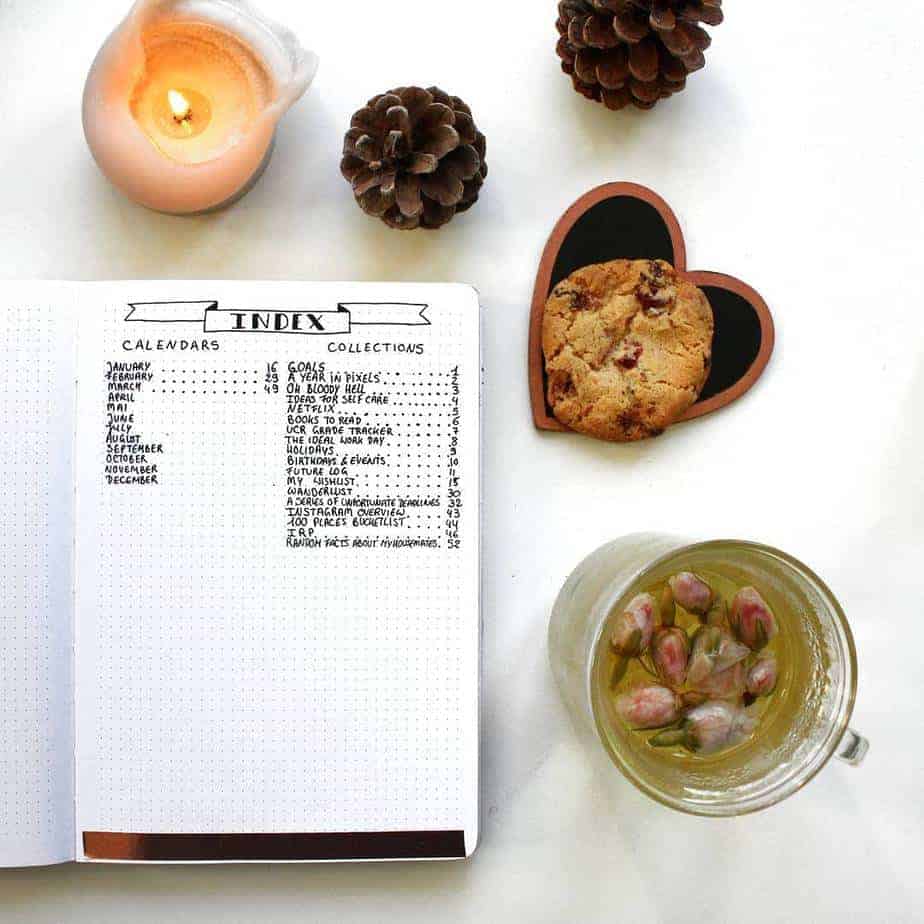
How Many Pages Do You Need For Bullet Journal Index
The amount of pages you might need for your index really depends on how you’re planning to use it. Figure out how you’ll be logging your information and how detailed you want your index to be first.
Notebooks like Leuchtturm1917 offer 3 pages for your Index, and I think it’s enough. But of course, if you make yours more detailed, it might take more space. I’d recommend using 3-4 pages for your first journal, and then you‘ll be able to test it and see how it goes.
An alternative option is to just start your index at the back of your notebook. It sounds a bit weird I know, but it will serve you the same way, and you’ll never run out of pages, disregarding how detailed you want your index to be.
What if you run out of pages?
In that case, there are a few things you can do.
First of all is, just continue your index on the next free page, and on your original index just note at which page it continues.
The second option is to add an extra page to your existing index – use a paper clip or washi tape.
Bullet Journal Index Hacks
Here are some little tricks you might use for your journal index page.
- Divide the index page into two columns – this way, you will save some space.
- Highlight your most frequently used pages so that you can find these at first glance.
- Color code your index to easily find the desired type of content (possibly divide it by planning pages, lists, notes, collections)
- Write the name of the month (if it’s later followed by more pages that are included in the month) in bold letters or in color.
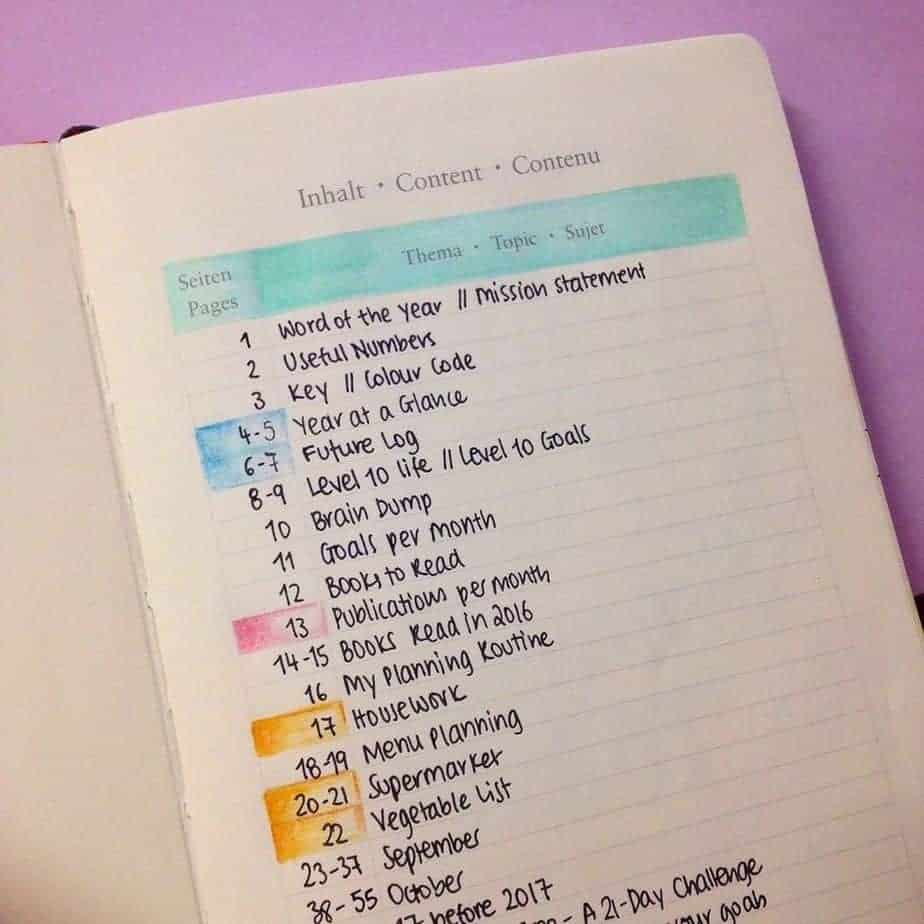
Bullet Journal Index Alternatives
As I mentioned before, you might actually not need an index at all, if you’re using a different way to organize your journal.
Here are some alternatives to the index page.
Color coding
You can color-code your content and add the colors accordingly to your pages.
That way, you just need to check with the key what each color means, and it’ll become very easy to find.

Washi tape coding
This works pretty much the same, but instead of colors, you use washi tape.
Though, I’d recommend you to use washi tape only on special pages that you know you’ll be referencing a lot in the future, instead of washi coding every page of your journal.
How to do it? Just add washi tape to the edge of your journal, so it’s well-seen when the journal is closed.

Monthly Tabs
If you just want to be able to find your notes for the month, you might want to look into using monthly tabs.
This of course would be perfect if you’re only interested in dividing your content by month.
- COLORFUL AND FUNCTIONAL: Use these designer monthly sticky tabs to keep track of your monthly notes in your favorite Erin Condren planner and notebooks.
- THE PERFECT SIZE: The monthly adhesive tabs are sized at 1-1/4" wide by 3/4" high. They are easily able to find when put into notebooks, planners and journals.
- ADDED ORGANIZATION: 12 colorful monthly tabs let you add organization to your Erin Condren planners and notebooks. One for each month of the year.
Journal dividers
Journal dividers work the same as monthly tabs but are more convenient for some. You get more freedom with journal dividers because you’re not limited to just noting the beginning of the month with these.
The tabs don’t have anything pre-written, so you’re free to add them to any important pages.
Bullet Journal Index Inspirations
Want to get some more ideas on how to create the index page? Check out these inspirations below.
These will give you some idea of how to decorate your index page.
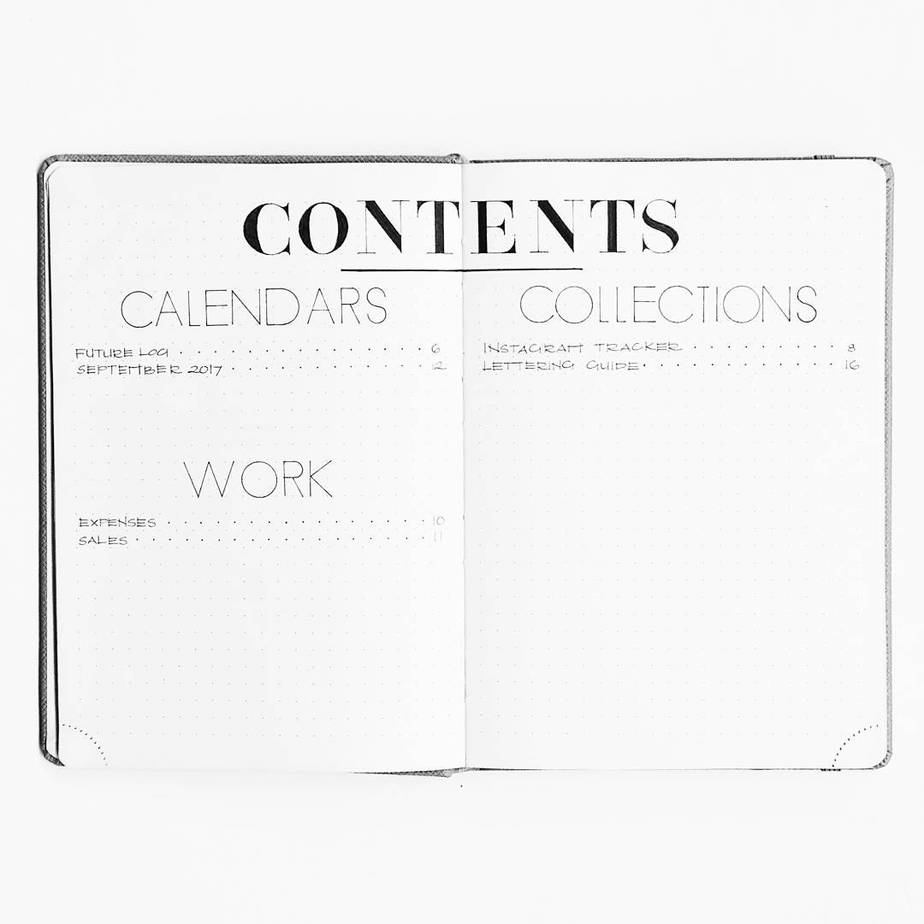
Beautiful index divided by different types of pages. This helps to save a lot of space and just add to the index the important pages you’ll be going back to.
I’m also really admiring the minimalist of this design.
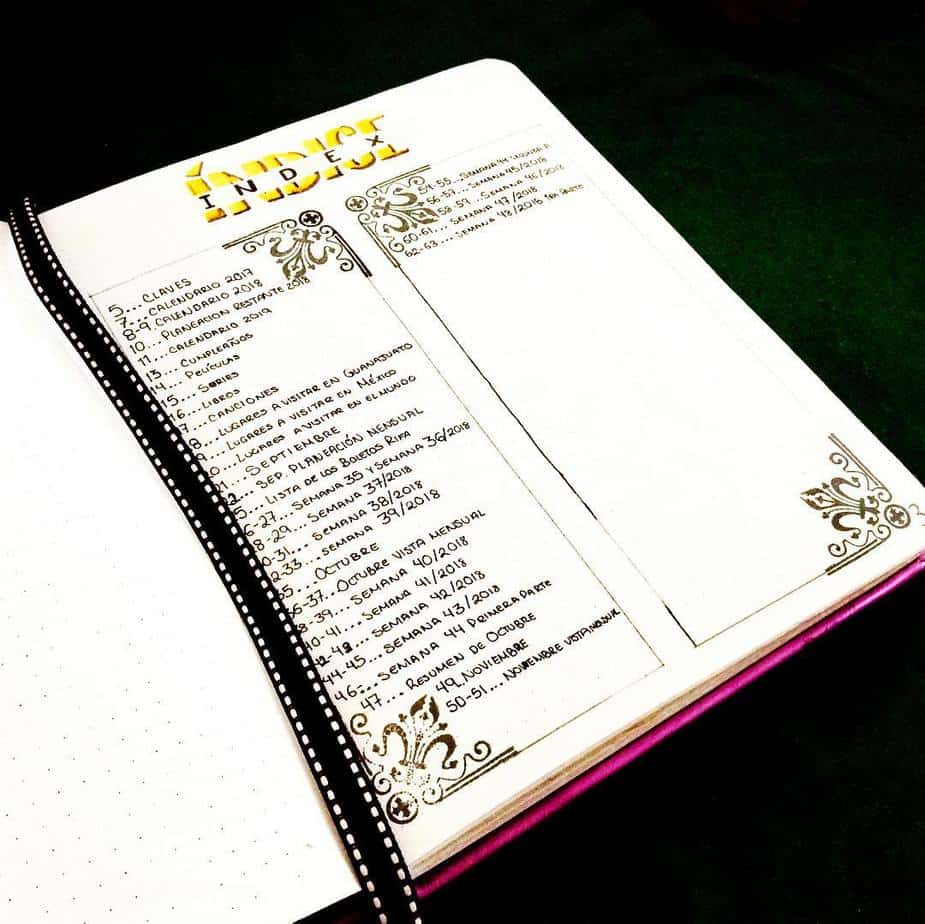
This index is very detailed, and it’s a good trick to divide it into two columns, that way more things will fit on one page.
I’m also really loving this combination of fonts in the header, really makes it stand out.

A beautiful and well-organized index spread. I like how the months are in bold so you can clearly see the division.
Also, the handwriting is so beautiful here! Handwriting really is a decoration on its own.
If you’re working on yours be sure to check my post 9 Simple Tricks To Improve Your Handwriting.
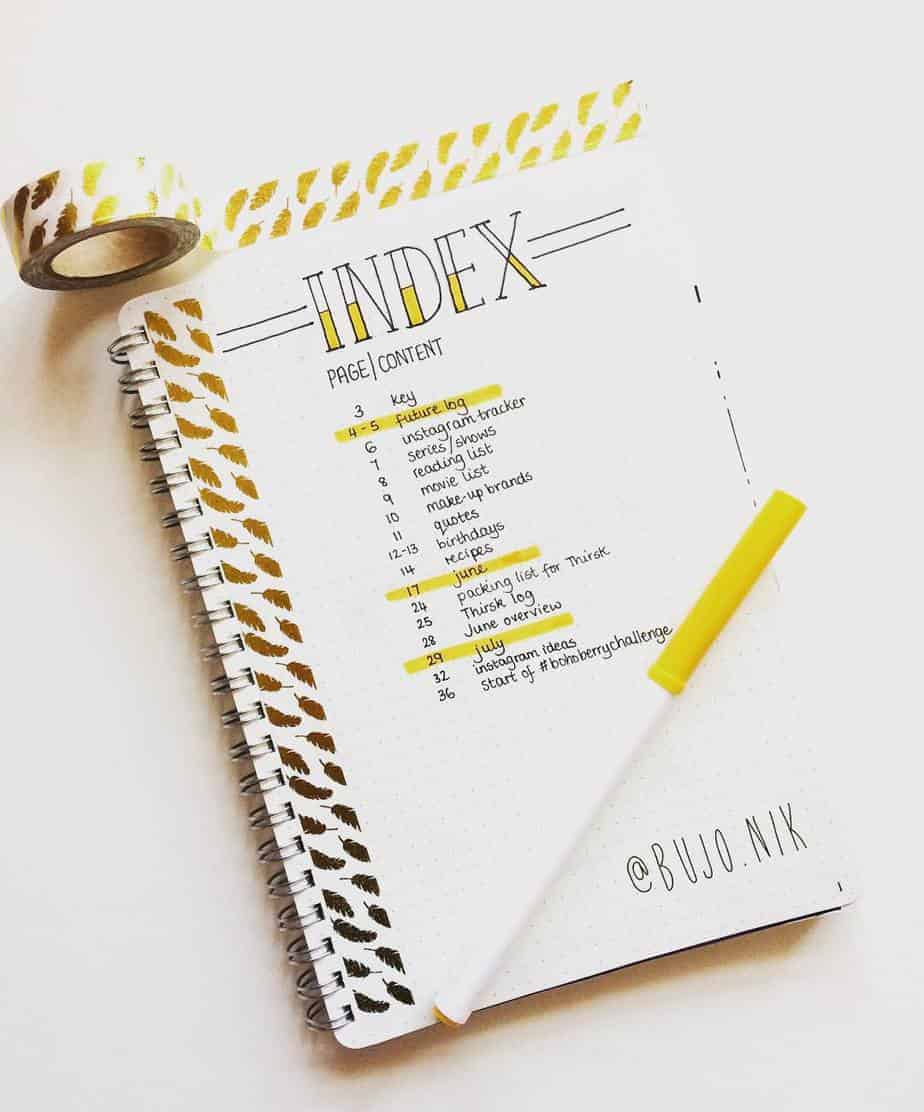
Washi tape is a great way to decorate your index page, and it’s been my favorite way to decorate yearly pages.
And it’s a great idea as well to highlight the most important pages, or maybe the beginning of the month.
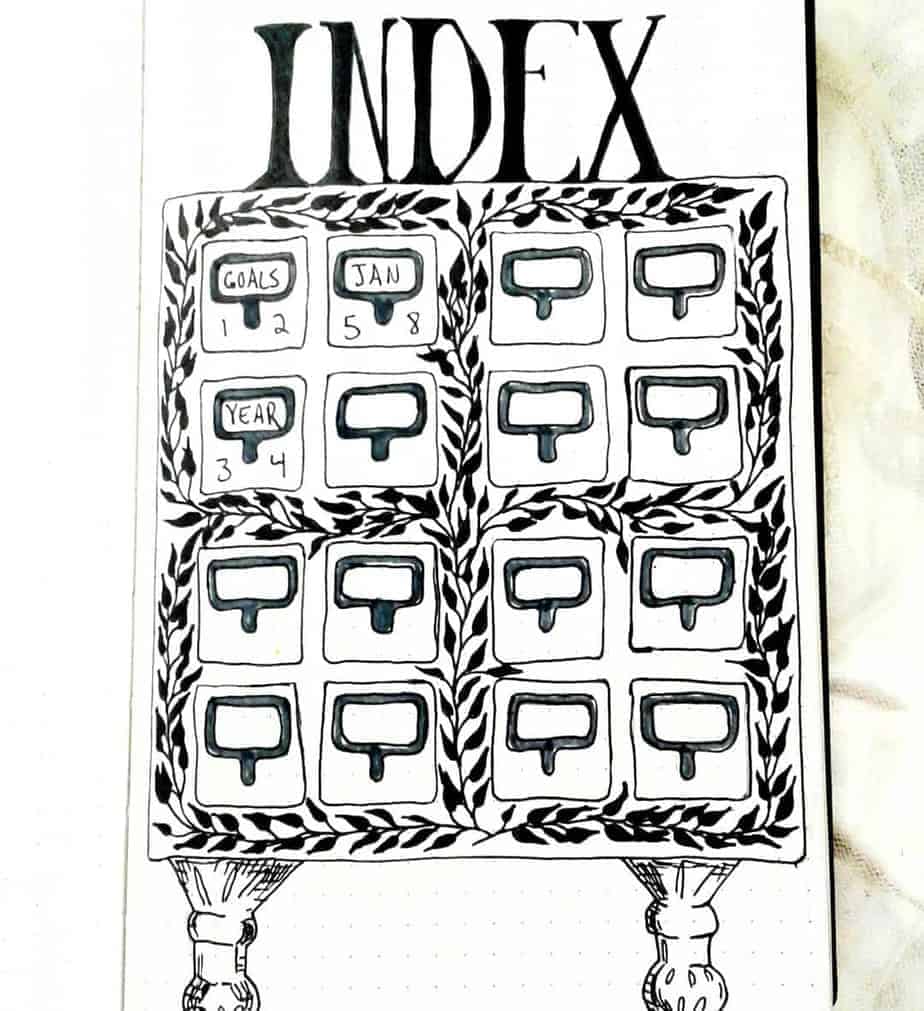
Beautiful and a very creative index page. I’ve never seen a design like that.
At first glance, I actually thought it’s a tracker, like maybe Instagram followers count or something like that.
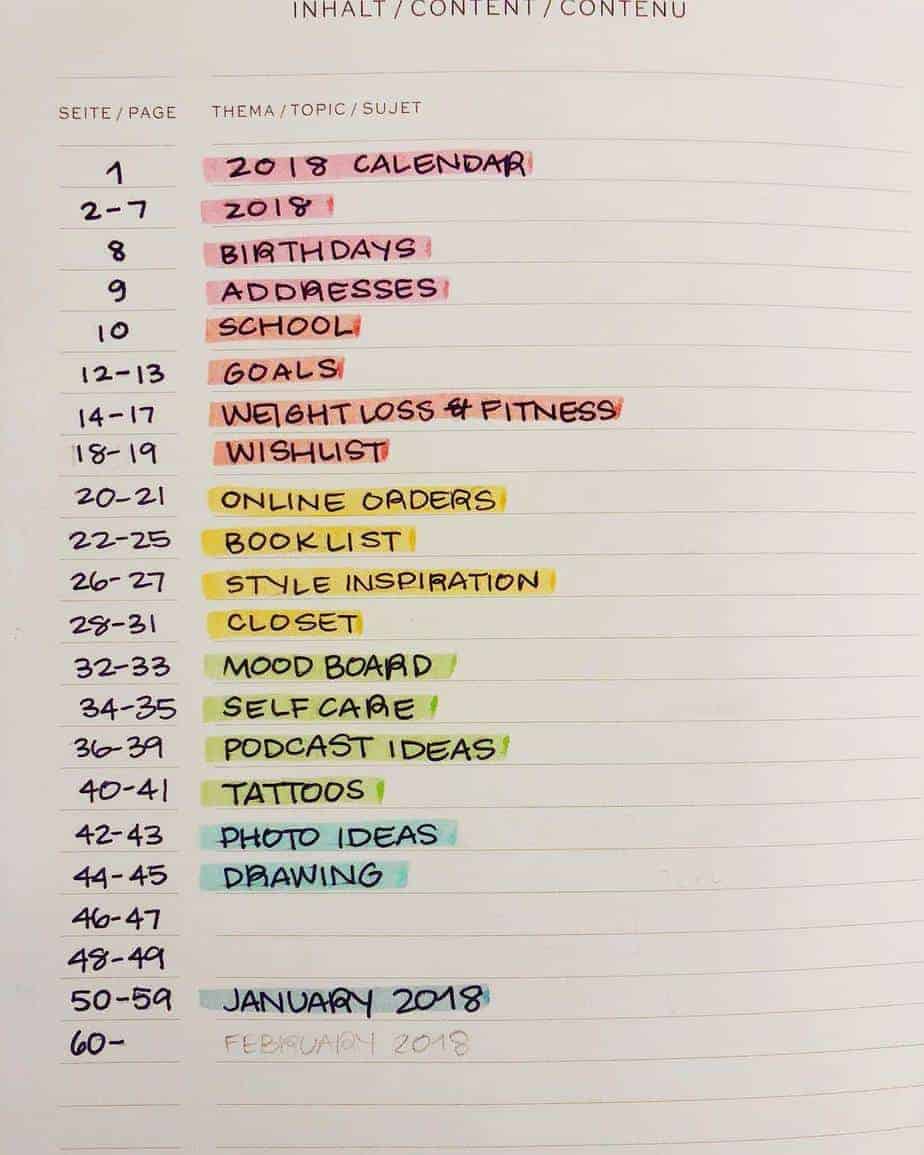
Here is a creative way to add color coding to your index.
I bet there is color coding on the key page as well.
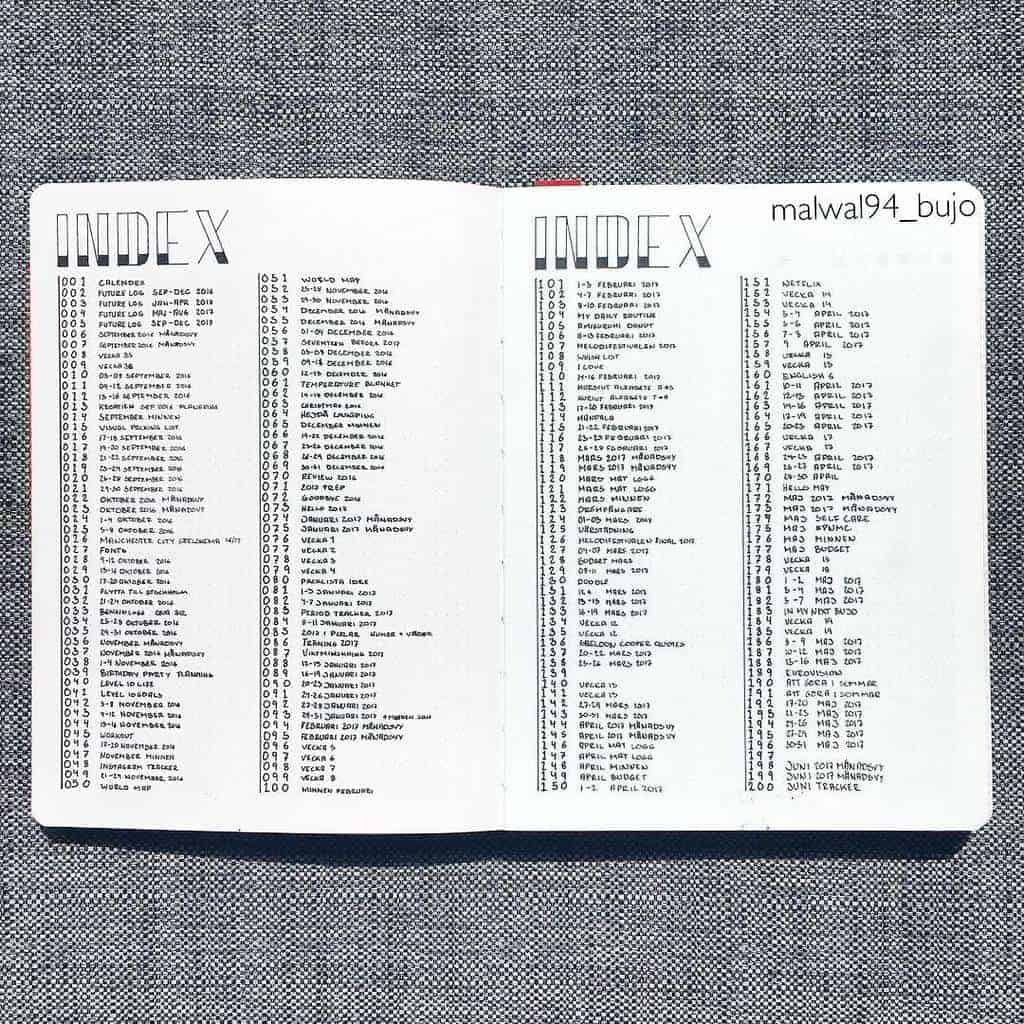
It’s always so incredible and satisfying to see a Bullet Journal spread filled out.
This index is no exception, and it’s so well organized. Absolute goals!

Beautiful page, beautiful handwriting – this page is just perfect.
Flowers are always a beautiful way to decorate a spread, and these flowers are flawless!
If you don’t know how to draw these check my post How To Draw Beautiful Flowers In Your Bullet Journal.

Something you might consider is creating a separate index for different categories, like this one is just for collections.
Also, how awesome just simple lines can decorate the page.
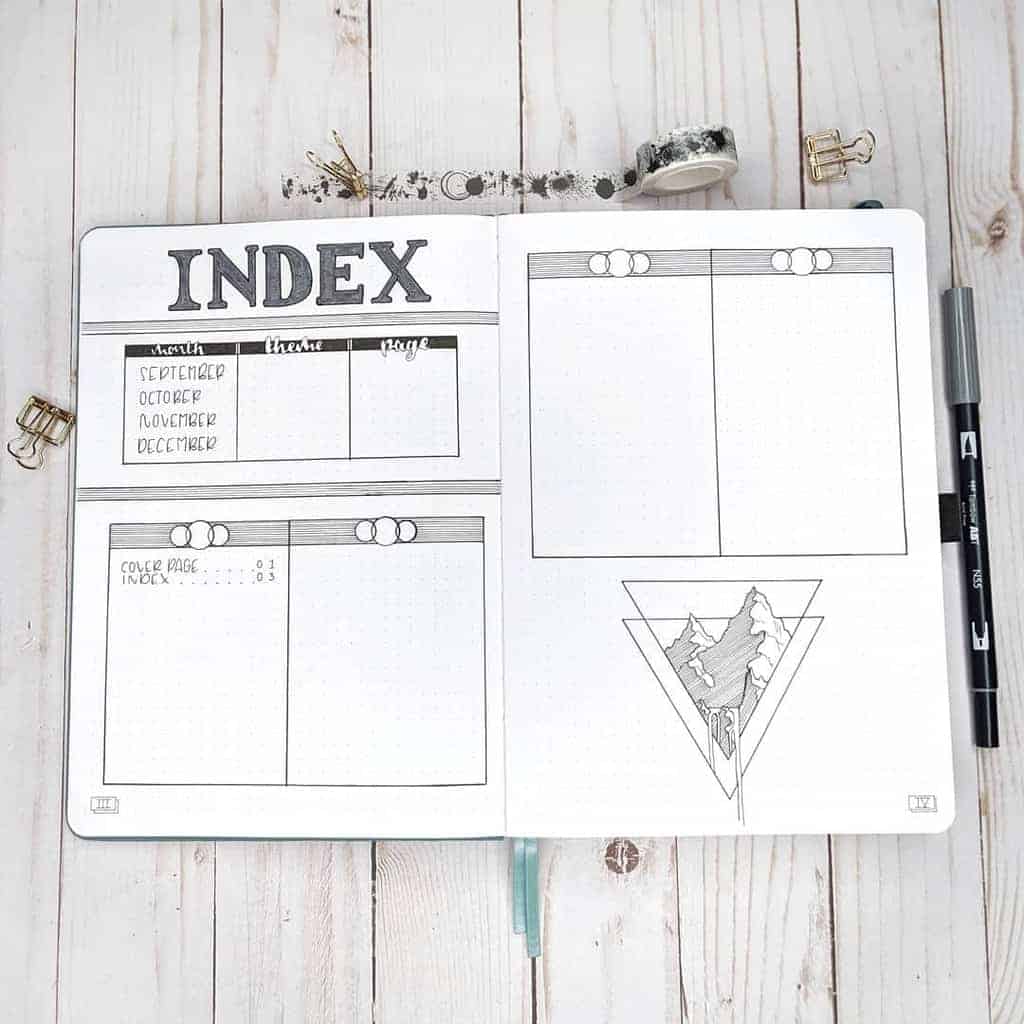
Absolutely stunning index; I love the grey vibe and the table with different themes.
How do you use your index, if you use one at all? What of these tricks would you like to try? Looking forward to reading your comments!
Hope this post was useful; if you find it so, please share! If you enjoy my content and want to show your appreciation, please consider supporting me with a cup of coffee.
And remember: Keep Bullet Journaling, and Don’t be a blob!








I read a great tip somewhere if you are a beginner like me…use a ring binder as a journal so you can move pages around until you get comfortable. I bought one that is 4×6 with 6 small rings. I love it and I can’t wait to get going! Thanks for all your help and ideas!
What a great tip!! Glad it works for you so well.
Thanks for your tips and hints. I have been doing Bullet Journaling for several months now and my first journal is a mix of various pages with no organization at all. Your information will help me to be better organized.
Welcome to the bujo world! And if you need any help I’m always here =)
I’m finding your emails and links here so helpful, especially as I’m a complete newbie to Bullet Journaling. Thank you for explaining everything so clearly. I now understand the need for an Index page.
Hey Julie, I’m so happy you find it useful =) Please always feel free to let me know if you need any help at all with your bujo spreads.
I have just started journaling and your emails and blog posts are my only source of information. These are really helpful for a newbie like me. Lots of love,
Muntaha
Hello Muntaha! Welcome to the Bullet Journal community! I’m so happy to hear you find my posts useful, please always feel free to let me know if you need help with anything. I’d be happy to help as much as I can.